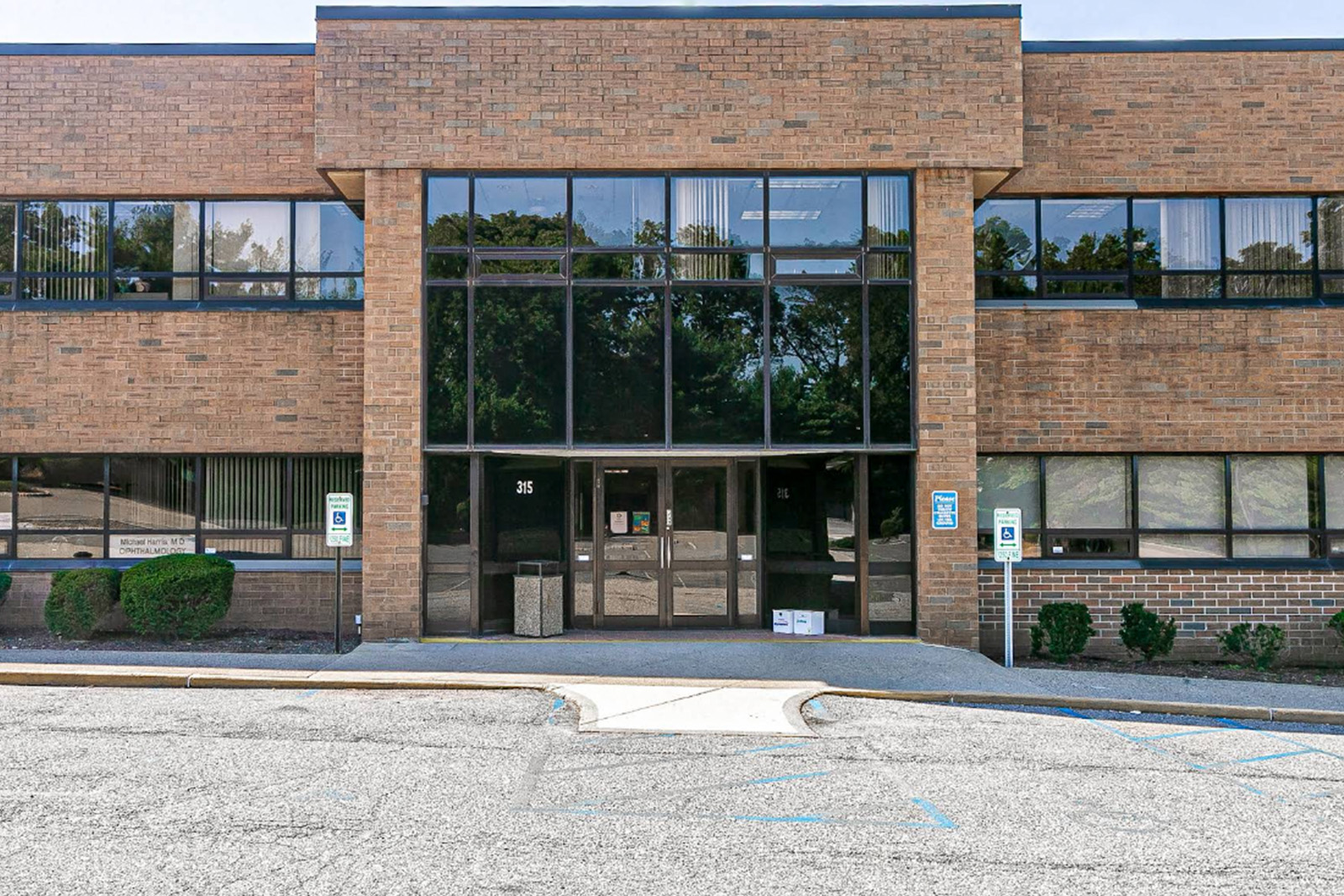Call Us Today!
(973) 625-1491
New Patients
(973) 221-5407

Traditionally, gum disease has been treated by removing infected gum tissue and reshaping uneven bone to eliminate periodontal pockets. While this method is still effective, modern dentistry now employs more advanced techniques, such as guided bone and tissue regeneration. This procedure helps stabilize at-risk teeth and prepares the jaw for dental implants.
As periodontal disease progresses, pockets of degenerated bone can form in the jaw, creating an environment that promotes bacterial growth and the spread of infection. To treat these areas, Dr. Rothstein may recommend guided tissue regeneration. During this surgical procedure, the affected pockets are carefully cleaned, and a specialized membrane is placed between the soft tissue and the bone pocket. Some membranes are bio-absorbable, while others may require removal. The membrane acts as a barrier, preventing fast-growing soft tissue from filling the pocket so that slower-growing bone can regenerate naturally.
The success of the procedure often depends on the patient’s commitment to a strict postoperative diet and diligent oral care. Dr. Rothstein will assess your individual needs and determine if guided bone regeneration is right for you.
Bone morphogenetic protein (BMP) is a naturally occurring protein that stimulates cells in the body to form new bone and cartilage. During the procedure, BMP is absorbed into a collagen sponge, which is placed in the treatment area. The sponge gradually dissolves, while BMP encourages new bone formation. Once its task is complete, the protein naturally disappears.
Using BMP eliminates the need to harvest bone from another part of the patient’s body, such as the hip. This reduces donor site pain and avoids potential complications, making bone regeneration less invasive and more comfortable for the patient.
Guided bone and tissue regeneration is a surgical technique used to encourage the growth of new bone and supporting gum tissue in areas of loss. The procedure uses a barrier membrane placed between the soft tissue and a bone defect to protect the space where bone is expected to grow. By excluding fast-growing soft tissue, the membrane allows slower-forming bone cells to repopulate the area and rebuild the bony architecture.
The approach is commonly used in periodontal therapy to stabilize teeth affected by bone loss and to prepare sites for dental implants. Depending on the defect, the surgeon may combine the membrane with bone graft material or biologic agents to enhance regeneration. Treatment is customized to the patient’s anatomy and oral health to maximize predictable outcomes.
Bone morphogenetic protein (BMP) is a naturally occurring signaling protein that stimulates precursor cells to form new bone and cartilage. In dental applications, BMP is often delivered on a collagen sponge or scaffold that fills the bone defect and gradually dissolves as new tissue forms. The protein activates cellular pathways that accelerate bone matrix production and mineralization in the targeted area.
Using BMP can eliminate or reduce the need to harvest bone from another part of the patient’s body, which decreases donor-site discomfort and potential complications. The decision to use BMP depends on the defect size, patient health, and clinical goals, and it is made after a careful evaluation. Your periodontist will discuss the expected benefits and any specific considerations for your case.
Bone regeneration is recommended when periodontal disease, trauma, or tooth loss has caused localized bone defects that compromise tooth stability or future implant placement. Typical indications include vertical bone defects, furcation involvement, and ridge deficiencies that need reconstruction. Restoring bone in these areas can halt disease progression and improve the long-term support of teeth and prosthetic restorations.
A complete clinical and radiographic evaluation determines whether guided regeneration is the best option. Dr. Alan Rothstein at A R Periodontics, PC will assess your medical history, smoking status, and oral hygiene to establish candidacy and develop a tailored treatment plan. When appropriate, regeneration may be combined with other therapies such as scaling and root planing or implant placement to achieve comprehensive results.
Materials used for bone regeneration include barrier membranes that can be resorbable or nonresorbable, particulate bone grafts of various origins, and biologic agents such as BMP. Graft choices include autograft (patient bone), allograft (donor bone), xenograft (animal-derived), and synthetic alloplasts, each with unique handling and regenerative properties. Membranes create and maintain the space for bone to form while grafts provide a scaffold and guide tissue in-growth.
Selection of materials is based on defect geometry, the need for structural support, and patient-specific factors like healing capacity and preferences. Resorbable membranes avoid a second surgery for removal, while nonresorbable options may offer greater rigidity in certain reconstructions. Your periodontist will explain the reasons for choosing specific materials and how they contribute to the planned outcome.
During a guided regeneration procedure the periodontist first numbs the area and makes precise incisions to access the bone defect. Any infected tissue is carefully removed and the defect is debrided to create a clean environment for healing. Graft material and biologic agents are then placed as needed, and a membrane is positioned to cover the site and protect the regenerating bone.
The soft tissues are sutured to achieve a stable, tension-free closure that minimizes the chance of membrane exposure. Procedures are performed under local anesthesia with or without sedation and are typically completed in one outpatient visit. Postoperative care instructions focus on protecting the area during initial healing and promoting predictable bone formation.
Initial soft-tissue healing generally occurs over one to two weeks, while true bone formation and remodeling take several months to complete. Patients commonly experience modest swelling and discomfort in the first few days, which can be managed with prescribed or over-the-counter medications. Following a soft diet and avoiding forceful brushing near the surgical site during early healing helps prevent complications.
Regular follow-up visits allow the periodontist to monitor soft-tissue healing and radiographically assess bone fill over time. Adherence to oral hygiene instructions, avoidance of tobacco, and attendance at scheduled maintenance appointments significantly affect long-term success. If a nonresorbable membrane is used, a second appointment may be needed to remove it once sufficient healing has occurred.
As with any surgery, guided regeneration carries risks such as infection, swelling, bleeding, and discomfort at the treatment site. Membrane exposure or premature loss of graft material may compromise regeneration and require additional treatment. Rare complications can include nerve irritation or delayed healing in medically complex patients.
Risk is reduced by proper case selection, meticulous surgical technique, and strict postoperative care. Patients who smoke, have uncontrolled systemic conditions, or fail to maintain oral hygiene have a higher likelihood of complications. Your periodontist will discuss specific risks, signs to watch for, and steps to take if concerns arise during recovery.
Long-term success of bone regeneration depends on the size and type of defect, the regenerative materials used, patient health, and ongoing periodontal maintenance. When performed appropriately, guided regeneration often results in meaningful bone fill that improves tooth stability and creates a better foundation for implants. Clinical studies and long-term observations support predictable outcomes in well-selected cases under experienced clinicians.
Maintenance care, including professional cleanings and excellent home care, is essential to preserve regenerated tissue and prevent recurrent disease. Regular monitoring with clinical exams and radiographs helps detect early changes and allows for timely intervention if problems develop. Open communication with your periodontist ensures that treatment goals and long-term expectations remain aligned.
Bone regeneration, bone grafting, and ridge augmentation are related but distinct procedures with different objectives. Bone grafting generally refers to placing graft material to add volume to a defect, while ridge augmentation specifically rebuilds the alveolar ridge for implant placement or esthetic needs. Guided regeneration uses a membrane to direct tissue healing so that bone, rather than soft tissue, repopulates a defect.
The choice among these techniques depends on the clinical problem: some cases require bulk volume restoration, others need targeted regeneration of lost bone height or width. Your periodontist will recommend the most appropriate approach or combination of procedures to achieve functional and esthetic goals. Understanding these differences helps set realistic expectations and informs informed consent and planning.
Not every patient is an ideal candidate for bone regeneration; active infection, uncontrolled systemic disease such as diabetes, or heavy tobacco use can impair healing. Certain medications, like antiresorptive drugs, and conditions that affect blood supply or immune response may also be contraindications or require special precautions. Insufficient soft tissue to achieve a tension-free closure can limit the predictability of regeneration and may necessitate alternative approaches.
A comprehensive consultation with a periodontist evaluates medical history, medications, radiographs, and intraoral findings to determine candidacy and any preparatory steps needed. When regeneration is not advisable, the clinician will discuss alternative treatments to restore function and preserve oral health. If you have questions about your suitability for bone regeneration, schedule an evaluation with Dr. Alan Rothstein at A R Periodontics, PC to review your options.
